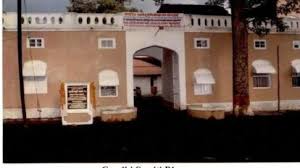Gandhian sites in Maharashtra’s Wardha to get Rs 45-crore makeover

Wardha, Maharashtra — The Maharashtra government has approved a ₹45-crore development plan to transform Gandhian heritage sites in Wardha. This effort aims to revive the legacy of Mahatma Gandhi and position the region as a center for learning, peace, and tourism.
A Historic Place with Modern Aspirations
Wardha, located in the heart of Maharashtra, holds a deep connection with India’s freedom struggle. Mahatma Gandhi made Sevagram Ashram his home in 1936. From there, he led several key movements and campaigns, including the Quit India Movement.
Over time, these sites lost their shine due to poor maintenance and limited public engagement. Now, the government wants to change that with a focused redevelopment strategy.
What the ₹45 Crore Will Do
The ₹45-crore plan is part of a larger ₹162-crore budget approved by the state Cabinet. These funds will support the transformation of key sites such as the Sevagram Ashram, Bapu Kutir, and nearby institutions. The government has outlined several initiatives:
- Renovating historic structures like Bapu Kutir using eco-friendly materials while preserving their original look.
- Replacing outdated museum exhibits with digital displays, touchscreen guides, and audio tours in multiple languages.
- Establishing a modern resource center for students, researchers, and visitors interested in Gandhian thought.
- Improving infrastructure by adding solar-powered lighting, eco-toilets, and accessible pathways.
- Building tourist amenities such as cafeterias, shaded seating areas, and clean walkways to make visits comfortable.
These changes aim to bring more people to these important sites while honoring Gandhi’s philosophy of simplicity and sustainability.
Creating a Gandhian Heritage Circuit
This makeover is just one part of a broader vision. The state aims to create a “Gandhian Heritage Circuit” in Maharashtra. This circuit will include Sevagram Ashram, Magan Sangrahalaya (a museum on rural industries), and other Gandhian landmarks in the region.
Authorities plan to introduce heritage trails where visitors can walk or cycle through key locations. These trails will include storyboards, QR-code scans, and guided tours. As a result, tourists will have a more engaging and educational experience.
Teaching Gandhi to a New Generation
One major goal of the project is to make Gandhian philosophy accessible to young people. In today’s fast-moving world, values like non-violence, truth, and self-reliance need new platforms for communication.
To address this, the renovated sites will host educational programs, youth seminars, and international workshops on peace and rural development. The state will encourage schools to organize field trips and hands-on activities at the site. This approach will help students connect with India’s moral and cultural roots.
Boosting the Local Economy
This initiative won’t just benefit history lovers. It will also create jobs and boost the local economy. Construction, maintenance, and tourism-related services are expected to generate employment for local workers.
In addition, self-help groups and artisans will get opportunities to sell handmade goods and eco-friendly souvenirs. Local families may also benefit from homestay tourism and food services. As tourism grows, Wardha could become a model for sustainable, community-driven development.
Phased Execution Over 2–3 Years
The Maharashtra Tourism Development Corporation (MTDC) will lead the project. Local authorities and heritage experts will support its implementation. Officials plan to roll out the redevelopment in phases over the next 24 to 36 months.
Tenders for the first phase, which includes building repairs and basic infrastructure upgrades, are likely to be issued soon. Later phases will focus on educational content, exhibitions, and tourist engagement.
Community Voices Matter
What sets this project apart is the strong focus on community involvement. Local residents, Gram Sabhas, and civil society groups are being consulted at each stage. Their insights will help ensure that the final outcome reflects both history and local sentiment.
A resident of Sevagram shared, “This is not just about fixing old buildings. It’s about reminding the world what Gandhi stood for — and letting future generations experience that spirit.”
Conclusion: A Journey from Memory to Meaning
This ₹45-crore investment represents more than bricks and mortar. It’s a step toward keeping Gandhian ideals alive in a world that often forgets them. The initiative promises to transform Wardha into a living, breathing center of ethical learning and peaceful activism.
With the right vision and execution, Wardha can become a global destination for those who want to understand not just India’s past — but also its spiritual future.






